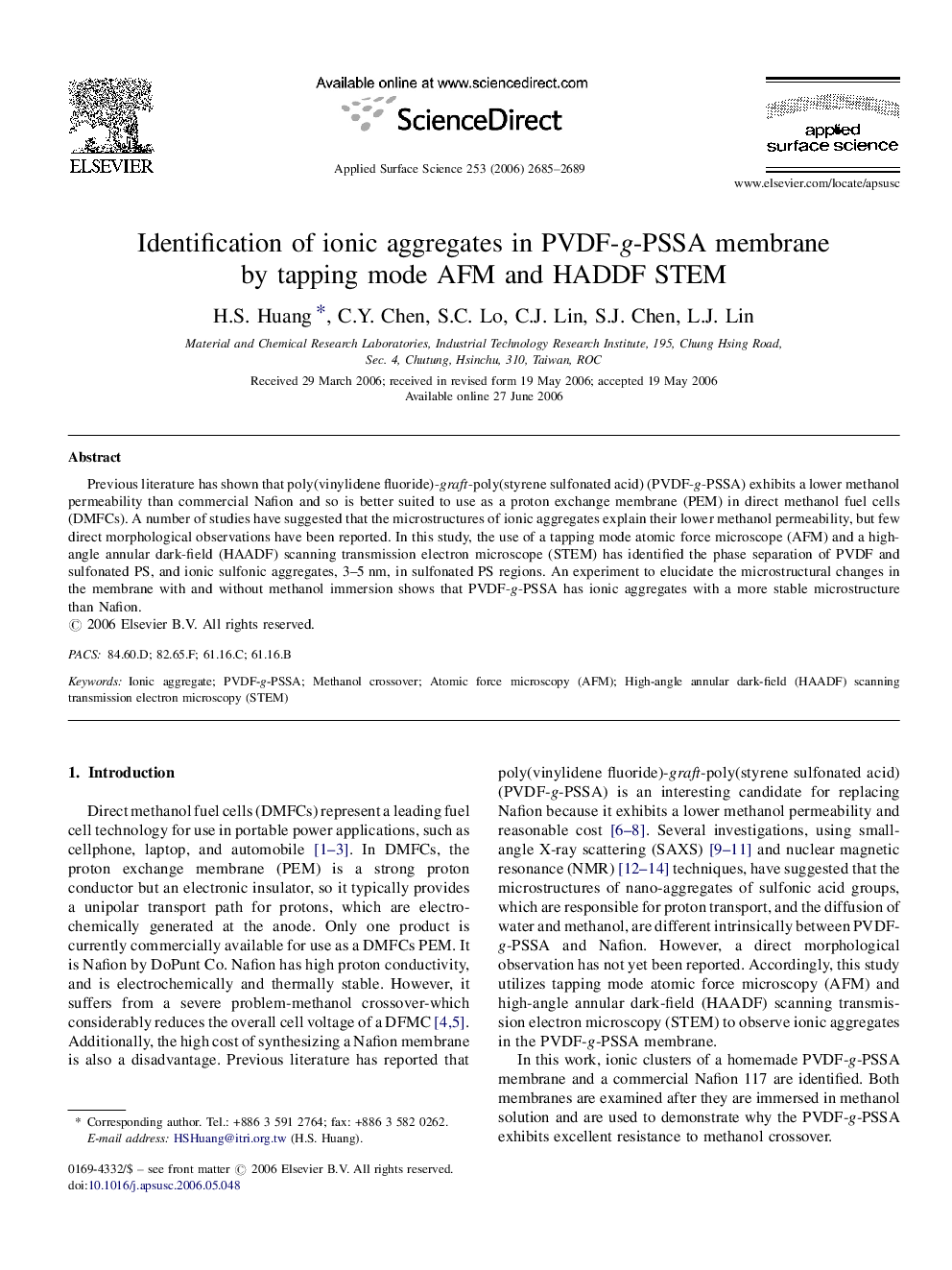| Article ID | Journal | Published Year | Pages | File Type |
|---|---|---|---|---|
| 5369949 | Applied Surface Science | 2006 | 5 Pages |
Previous literature has shown that poly(vinylidene fluoride)-graft-poly(styrene sulfonated acid) (PVDF-g-PSSA) exhibits a lower methanol permeability than commercial Nafion and so is better suited to use as a proton exchange membrane (PEM) in direct methanol fuel cells (DMFCs). A number of studies have suggested that the microstructures of ionic aggregates explain their lower methanol permeability, but few direct morphological observations have been reported. In this study, the use of a tapping mode atomic force microscope (AFM) and a high-angle annular dark-field (HAADF) scanning transmission electron microscope (STEM) has identified the phase separation of PVDF and sulfonated PS, and ionic sulfonic aggregates, 3-5Â nm, in sulfonated PS regions. An experiment to elucidate the microstructural changes in the membrane with and without methanol immersion shows that PVDF-g-PSSA has ionic aggregates with a more stable microstructure than Nafion.
